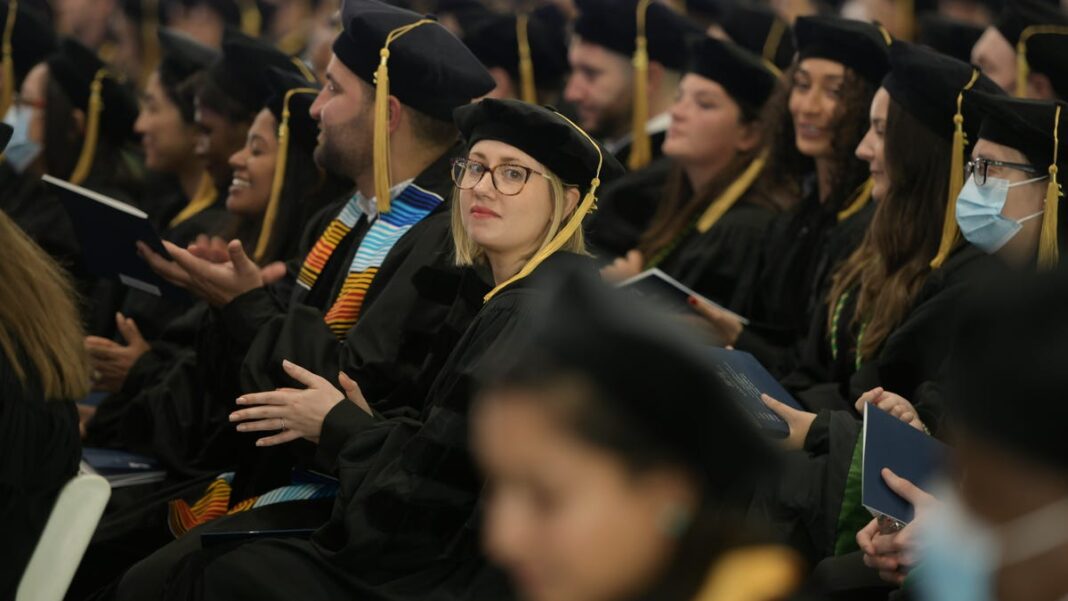What are the 20 highest-paying jobs in America? Doctors, doctors, more doctors.
Question: Which occupations offer the highest salaries in the U.S.?
Answer: The primary answer is doctors.
It’s largely accurate: Among the 20 highest-paid professions in the U.S., as reported by the Bureau of Labor Statistics, 16 are some form of medical doctor.
Pediatric surgeons have an average salary of $449,320 annually, while cardiologists earn about $423,250. Orthopedic surgeons make an average of $378,250.
The only exceptions among these 20 high-paying roles are dentists, including orthodontists and dental specialists.
Doctors consistently out-earn other major professions, including engineers, computer scientists, and even lawyers, according to federal statistics.
To find a profession that pays better than doctors, one would have to look at specific elite positions, like corporate CEOs or partners at law firms. On average, a partner in a large firm makes over $1 million per year, and CEOs of S&P 500 companies received around $16.3 million in 2023, as reported by the Associated Press.
The high salaries of American doctors are so notable that economists have dedicated years to examining the reasons behind it.
Here’s what they discovered.
A Long Journey of Education
Anyone applying to medical school understands that the path to becoming a doctor is lengthy: it includes college, medical school, and several years of residency training.
Additionally, the working hours are extensive. Research indicates that a doctor’s weekly hours can range from more than 40 to over 60, depending on their specialty.
“The extensive training and lengthy work hours contribute to higher wages,” stated Joshua Gottlieb, an economist from the University of Chicago involved in the research.
Gottlieb and his colleagues found that doctors in fields requiring greater training and longer hours tend to earn more. For instance, an additional year of training can result in an annual income increase of $143,000.
However, education and hours alone don’t explain everything. Farmers and ranchers also work long hours but don’t earn physician salaries.
Regarding education, many of Gottlieb’s academic colleagues spend just as long in school as doctors, yet most professors earn under $100,000 yearly.
“I’ve spent more years in school than my brother, who is an emergency room doctor,” noted Teresa Ghilarducci, an economics chair at The New School for Social Research in New York, who wasn’t involved in Gottlieb’s study.
The Financial Motivation of Doctors
Gottlieb and his co-authors faced criticism from some doctors for their conclusion that medical professionals often pursue higher-paying opportunities.
According to their findings, the average doctor earned $350,000 in 2017, which they shared in a 2023 working paper pending publication in the Quarterly Journal of Economics. The top 1% of physicians made over $1.7 million annually.
They found that graduates from prestigious medical schools tend to choose the most lucrative specialties and favor procedures that provide higher returns.
Some medical fields are exceptionally well compensated. Here are a few peak salaries for doctors in their prime earning years (ages 40 to 55) from 2017, as identified by Gottlieb and his colleagues:
- Neurosurgery: $920,500
- Orthopedic surgery: $788,600
- Dermatology: $655,200
- Cardiac surgery: $607,300
- Ophthalmology: $597,000
“There’s a clear trend where individuals are drawn to specialties offering higher pay,” Gottlieb observed, paralleling the tendencies seen in other professions. “It’s a natural inclination.”
Maria Polyakova, an associate professor at Stanford medical school, collaborated with Gottlieb on this research. She pointed out that graduates from medical school are typically top-tier students with numerous career options available to them.
“Generally, they are exceptional learners with abundant career opportunities ahead,” she noted.
“Students in the nation could have sought out different career paths that offer similar pay,” she stated.
The American Medical Association informed YSL News that physicians generally undergo 12 to 15 years of training, often graduating from medical school with debts exceeding $200,000. Higher salaries assist them in repaying their debts and making up for lost income during their training years.
Insufficient Number of Doctors
The United States has a lower ratio of doctors to patients compared to many other developed countries, according to the Organization for Economic Cooperation and Development: there are 2.7 doctors per 1,000 potential patients as of 2021, whereas France has 3.4, and Germany has 4.5.
Researchers attribute this shortage partly to the medical sector and the federal government limiting the number of spots available in U.S. medical schools and hospital residencies.
This deficit originated from a time when health officials believed the country produced too many doctors, which led to restrictions on medical school admissions and residency placements. Ironically, these same groups are now alerting us to a doctor shortage.
The medical association acknowledges that its position has evolved, recognizing the aging current workforce and the issue of burnout among doctors.
“We have what you might call an artificially limited supply of doctors,” explained Andrew Biggs, a senior fellow at the American Enterprise Institute. He was not part of Gottlieb’s research. “Economists refer to this as a barrier to entry,” which subsequently pushes doctor salaries higher.
Biggs remarked that “the American Medical Association is acting in a way akin to a union for doctors” by restricting the number of practitioners, allowing them to maintain higher wages.
Government-Set Prices
Researchers point out that one fundamental reason for high doctor salaries is the overall cost of medical care, which is significantly influenced by the federal government.
Medicare, the government’s insurance program, determines the pricing for medical services. These prices are set to such an extent that healthcare spending now accounts for at least 17% of the country’s gross domestic product.
“The government has chosen to allocate a substantial portion of resources to healthcare,” stated Gottlieb.
Patients—essentially the customers—have minimal control over the cost of their healthcare.
“It’s not like you’re going to price shop for surgeons,” remarked Biggs.
This structure, economists argue, makes the healthcare industry nearly distinct from other American sectors.
Ghilarducci compared it to defense contracting, stating, “The primary client,” which is the federal government, “has abundant funding.”

